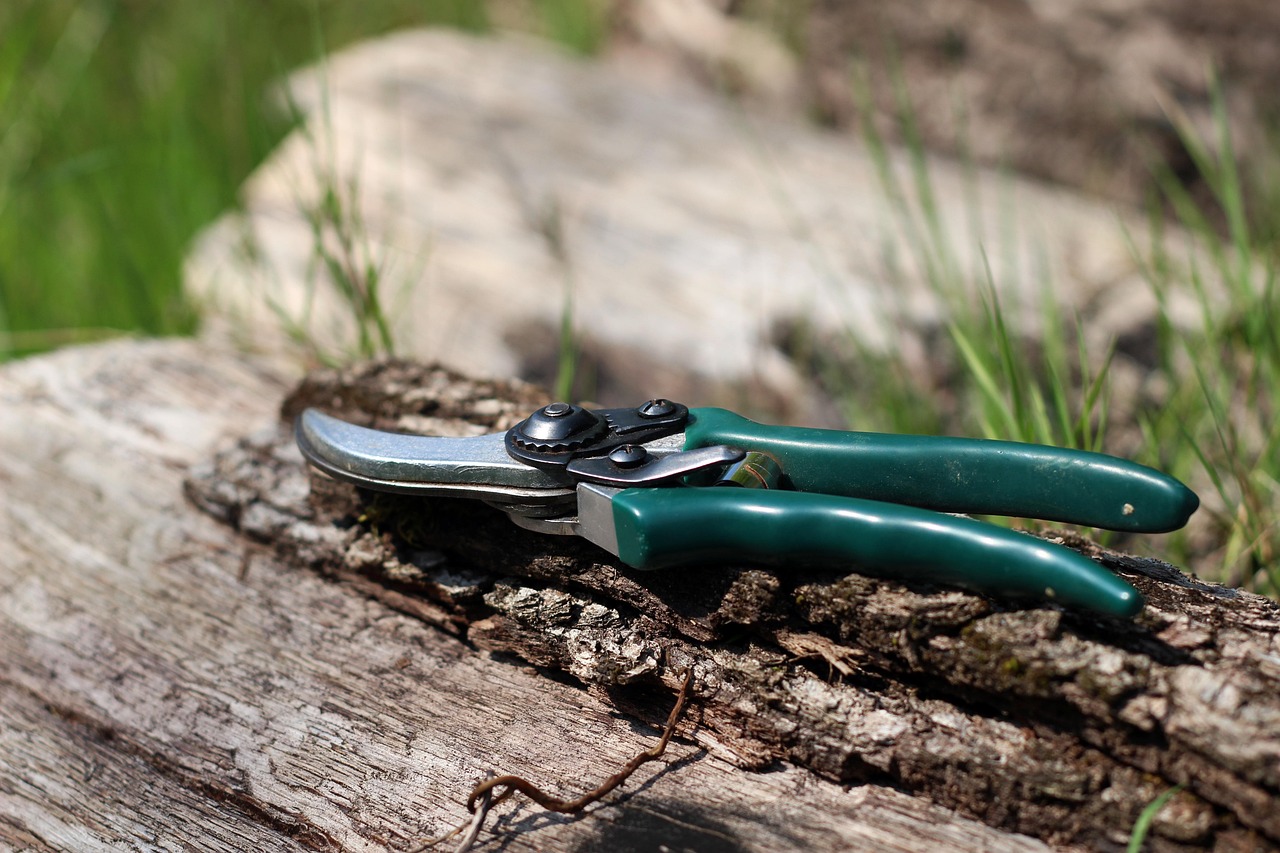Dormant season pruning promotes plant health by removing dead or diseased branches, improving air circulation, and encouraging new growth. This practice minimizes disease spread and fosters a more robust structure, ultimately leading to healthier and more productive plants.
Pruning is an essential gardening technique that involves selectively removing parts of a plant, such as branches or stems. The dormant season, typically late winter or early spring, is considered the ideal time for this activity. During these colder months, many trees and shrubs enter a state of dormancy. In this state, the plants are less stressed and can recover more quickly from pruning. Understanding the benefits of dormant season pruning can significantly enhance the health and vitality of your plants.

One of the primary benefits of pruning during the dormant season is the reduction of disease risk. Many diseases thrive on dead or decaying wood. By removing these infected parts, gardeners can prevent the spread of pathogens that might compromise the health of the entire plant. Furthermore, pruning encourages better air circulation within the plant’s canopy. This is especially important for dense shrubs and trees, where poor airflow can lead to moisture buildup and increase the risk of fungal infections.
Key Benefits of Dormant Season Pruning
Several key benefits make dormant season pruning a valuable gardening practice. Below are some of the most significant advantages:
- Enhanced Plant Structure: Pruning helps develop a strong framework for plants. By removing weak or crossing branches, gardeners can promote an upright growth habit.
- Increased Sunlight Exposure: Properly pruned plants receive more sunlight, which is vital for photosynthesis and overall health.
- Improved Air Circulation: Thinning out branches allows for better air movement, reducing humidity levels and preventing fungal issues.
- Encouragement of New Growth: Pruning stimulates new growth in the spring, leading to a more vigorous plant.
- Easier Maintenance: Pruned plants are simpler to care for over time, making it easier to manage their growth.
The timing of pruning is also crucial for its effectiveness. When performed during dormancy, plants are less likely to bleed sap or suffer from shock. This timing allows them to heal more efficiently when the growing season arrives. Additionally, certain species respond particularly well to dormant pruning, including many fruit trees and ornamental shrubs.

Here is a table summarizing some common plants that benefit from dormant season pruning:
| Plant Type | Recommended Pruning Time | Benefits of Pruning |
|---|---|---|
| Fruit Trees | Late winter to early spring | Improved fruit yield and quality |
| Deciduous Shrubs | Late winter | Promotes blooming and healthy structure |
| Ornamental Trees | Late fall to early spring | Enhances shape and reduces disease risk |
| Perennials | Late winter | Encourages robust growth in spring |
An additional benefit of dormant season pruning is aesthetic improvement. Many gardeners take advantage of this time to shape their plants and create a more appealing landscape. Well-pruned trees and shrubs contribute to a tidy garden appearance and can even increase property value by enhancing curb appeal.
Moreover, dormant season pruning can significantly affect the lifespan and productivity of plants. Healthy, well-maintained plants are less prone to pests and diseases, making them easier to manage in the long run. Additionally, regular pruning encourages a healthy balance between vegetative growth and flowering or fruiting. This balance is crucial for gardeners who wish to maximize their harvests or enjoy an abundance of blooms each year.

Understanding the benefits of dormant season pruning helps gardeners make informed decisions about their plant care practices. With proper timing and technique, this practice can lead to healthier, more resilient plants that thrive in various conditions. As we explore further into this topic, we will delve deeper into specific techniques and best practices for successful dormant season pruning.
Techniques for Effective Dormant Season Pruning
To reap the numerous benefits of dormant season pruning, understanding the proper techniques is essential. Effective pruning not only ensures plant health but also enhances growth and aesthetics. Below are several key techniques that gardeners should consider when performing dormant season pruning.
Choosing the Right Tools
Using the correct tools is vital for successful pruning. The right tools can make the process more efficient and minimize damage to plants. Essential tools include:

- Bypass Pruners: Ideal for cutting live branches up to 3/4 inch thick. Their design allows for clean cuts, which aids in faster healing.
- Loppers: Useful for thicker branches, loppers can cut branches up to 2 inches in diameter.
- Saws: A pruning saw is recommended for larger branches. It provides more power and control.
- Gloves: Protect your hands from cuts and scrapes while pruning.
- Tar or Sealant: Although not always necessary, sealants can help protect larger cuts from pests and diseases.
Understanding Pruning Cuts
Making the right cuts is crucial for plant health. There are several types of cuts to consider:
- Heading Cuts: These cuts shorten a branch and stimulate growth of lateral buds, encouraging bushier plants.
- Thinning Cuts: Removing entire branches at their point of origin improves air circulation and light penetration.
- Reduction Cuts: These reduce the overall size of a plant while maintaining its natural shape.
- Removal Cuts: This involves cutting off dead or diseased wood, which is essential for preventing disease spread.
Timing Your Pruning
The timing of your pruning efforts is crucial to ensure that plants recover effectively. The dormant season is typically from late fall to early spring, depending on your climate. Here are some guidelines:
- For most deciduous trees and shrubs, prune during late winter or early spring before new growth begins.
- Some flowering shrubs should be pruned right after they bloom to avoid cutting off next season’s flowers.
- Evergreens can be pruned in late winter, but avoid heavy pruning as it can lead to stress.
Common Mistakes to Avoid
Dormant season pruning can be highly beneficial, but certain mistakes can hinder plant health and growth. Awareness of these common pitfalls can help you achieve better results.
- Over-Pruning: Removing too much foliage can stress the plant and reduce its ability to photosynthesize.
- Improper Cuts: Making cuts too close or too far from a branch collar can hinder healing and lead to decay.
- Poor Timing: Pruning too early or too late can affect the plant’s growth cycle and overall health.
- Neglecting Tools Maintenance: Using dull or dirty tools can cause jagged cuts and transmit diseases.
The Role of Pruning in Pest Management
Dormant season pruning plays a significant role in pest management. By removing dead or dying wood, gardeners can eliminate potential habitats for pests. Moreover, less dense foliage allows for better air circulation, reducing the likelihood of pest infestations. Here are some pest management benefits of pruning:
- Reducing Pest Habitats: Dead branches can harbor insects and diseases. Removing them minimizes these risks.
- Avoiding Disease Spread: Many diseases are transmitted through insects that thrive in crowded conditions. Pruning helps reduce these populations.
- Monitoring Plant Health: Pruning allows gardeners to inspect plants closely for signs of pests or diseases, enabling early intervention.
The relationship between pruning and pest management highlights the importance of integrating these practices into regular gardening routines. Healthy plants are less susceptible to attacks, making pruning a proactive approach to maintaining garden vitality.
Seasonal Considerations for Different Regions
The effectiveness of dormant season pruning can vary by region due to climate differences. Understanding how local conditions affect pruning practices is essential for optimal results. Here are some regional considerations:
| Region | Ideal Pruning Time | Considerations |
|---|---|---|
| Northern Areas | Late winter (February to March) | Be cautious of late frosts; wait until after the last frost date. |
| Milder Climates | Eagerly in early spring (March to April) | Aim for a warmer period when plants are just beginning to awaken. |
| Tropical Regions | Any time during cooler months (may vary) | Avoid heavy pruning during rainy seasons to prevent disease. |
Being mindful of these regional differences will help ensure that your dormant season pruning is both timely and effective, leading to a thriving garden throughout the growing season.
Understanding Plant Responses to Pruning
To effectively utilize dormant season pruning, it’s essential to understand how plants respond to this practice. Different species have unique responses to pruning that can influence their growth and health. Recognizing these responses can help gardeners tailor their pruning techniques to suit specific plants.
Types of Plant Responses
Plants generally exhibit two main types of responses to pruning: physiological and structural. These responses are important for creating a healthy and productive garden environment.
- Physiological Responses: These involve the internal processes of the plant, such as changes in hormone levels. When a plant is pruned, it often triggers the release of hormones that promote growth. This response can lead to increased branching and flowering.
- Structural Responses: These pertain to the physical changes in the plant’s structure. Pruning can improve the plant’s overall shape, making it more balanced and aesthetically pleasing. Additionally, it can reduce the risk of breakage by eliminating weak or crossing branches.
The Role of Growth Hormones
When pruning occurs, plants respond by adjusting their growth hormones. The primary hormone involved is auxin, which regulates growth patterns. Understanding how these hormones work can help gardeners maximize the benefits of pruning.
After a plant is pruned, auxin concentrations shift towards the remaining buds. This shift encourages those buds to grow more vigorously, producing new shoots. Additionally, cytokinin hormones promote cell division and help with root growth. By understanding this relationship, gardeners can prune at strategic points to enhance desired growth patterns.
Species-Specific Pruning Techniques
Different plants require tailored pruning techniques to optimize their health and growth. Below is a selection of common species and their specific pruning needs during the dormant season.
Fruit Trees
Fruit trees benefit significantly from dormant season pruning. Proper techniques can lead to improved fruit quality and yield. Here are some key points:
- Open Center Pruning: This technique involves creating a vase-like shape that allows sunlight to penetrate the center of the tree, encouraging fruit development.
- Cutting Back New Growth: Reducing last season’s growth helps redirect energy towards fruit production rather than excessive vegetative growth.
- Removing Suckers: Suckers compete for nutrients and should be removed to ensure that energy focuses on producing fruit.
Ornamental Shrubs
Many ornamental shrubs thrive when pruned during their dormant phase. They can benefit from both aesthetic shaping and health-promoting practices:
- Renewal Pruning: This technique involves cutting back older stems to ground level every few years, allowing younger stems to take over.
- Size Management: Reducing the size of overgrown shrubs not only maintains their shape but also encourages denser foliage.
- Deadheading: Removing spent flowers can promote more blooms when spring arrives.
Perennials
Perennials also respond well to dormant season pruning, helping them prepare for a vigorous growing season:
- Cleansing Cuts: Remove dead stems and foliage to prevent disease and pests from overwintering in the plant.
- Dividing Clumps: Some perennials benefit from being divided every few years to encourage new growth.
- Height Reduction: Cutting back taller perennials can prevent breakage from heavy snowfall or wind.
Pruning Techniques for Different Growth Habits
The growth habit of a plant greatly influences how it should be pruned. Understanding whether a plant is an upright grower, a spreading type, or a climbing plant will help determine the best approach for pruning.
Upright Growers
Upright plants, such as certain trees and shrubs, typically benefit from thinning cuts that open up their canopy:
- Thinning Out: Remove selected branches that are crossing or crowded to improve light penetration.
- Crown Reduction: Lowering the height of the tree or shrub while maintaining its structure helps manage space while ensuring health.
Spreading Plants
Spreading plants often require more aggressive pruning to maintain their shape and prevent overcrowding:
- Encouraging Airflow: Selectively remove branches that grow inward or too closely together.
- Mounding Technique: For certain shrubs, cutting back about one-third of the stems can promote denser growth.
Climbing Plants
Climbing plants may require specialized techniques to ensure they grow effectively along supports:
- Training New Growth: Guide new shoots along trellises or supports while removing unwanted stems.
- Cleansing Old Foliage: Remove any dead or weak stems that may hinder overall growth and appearance.
Understanding these species-specific techniques and growth habits ensures that gardeners can make informed decisions about their dormant season pruning practices. This knowledge not only enhances plant health but also promotes an attractive landscape year-round.
Additional Considerations for Successful Pruning
While understanding the techniques and benefits of dormant season pruning is essential, several additional considerations can further enhance the effectiveness of this practice. Gardeners should be aware of environmental factors, plant health assessments, and ongoing maintenance to ensure long-term success.
Environmental Factors
The environment plays a significant role in how plants respond to pruning. Here are some factors to consider:
- Weather Conditions: Ideal pruning conditions include dry weather. Wet conditions can lead to increased disease risk. Aim to prune on dry days when the temperature is mild.
- Soil Health: Healthy soil supports robust plant growth. Before pruning, assess soil quality and make any necessary amendments to improve nutrient availability.
- Sunlight Exposure: Monitor how much sunlight your plants receive. Ensure that pruning does not inadvertently block light from reaching other plants in the vicinity.
Assessing Plant Health
Before undertaking pruning, it is vital to assess the overall health of the plants. Here are some key indicators to look for:
- Leaf Color and Texture: Healthy plants have vibrant leaves. Yellowing or discoloration may indicate nutrient deficiencies or disease.
- Growth Patterns: Observe how plants grow throughout the season. Stunted growth may signal underlying issues that need addressing before pruning.
- Root Condition: For potted plants, check the root system when possible. Healthy roots should be white and firm, while brown or mushy roots indicate problems.
By assessing plant health, gardeners can make informed decisions about which branches to prune and how aggressively to prune them. A thorough understanding of the plant’s condition can lead to better outcomes and healthier growth in the following seasons.
Continued Maintenance After Pruning
After completing dormant season pruning, ongoing maintenance is crucial to support recovery and growth. Here are some important post-pruning practices:
- Watering: Ensure that plants receive adequate water after pruning, especially if they are newly pruned or during dry spells. This helps reduce stress and encourages new growth.
- Fertilizing: Applying a balanced fertilizer in early spring can provide essential nutrients that support new growth and flowering.
- Pest Monitoring: Keep an eye out for pests that may take advantage of the open cuts or stressed plants. Early detection can prevent larger infestations.
Regular maintenance following pruning ensures that plants rebound quickly and maintain their health through the growing season. By combining effective pruning techniques with these ongoing care practices, gardeners can create a thriving garden environment.
Final Thoughts
Dormant season pruning is a valuable practice that fosters healthier plants and enhances garden aesthetics. Understanding the benefits, techniques, and species-specific needs is essential for maximizing the advantages of this practice. Healthy pruning not only promotes vigorous growth but also plays a crucial role in disease management and pest prevention.
As gardeners become more knowledgeable about their plants and their unique requirements, they can implement effective pruning methods that lead to a flourishing landscape. By incorporating seasonal considerations, environmental factors, and continued maintenance into their gardening routines, individuals can cultivate vibrant gardens that thrive year after year.
In summary, dormant season pruning is more than just a routine task; it is an art form that, when executed correctly, contributes significantly to the overall health and beauty of gardens. Embracing these practices will lead to more resilient plants and an enjoyable gardening experience.
